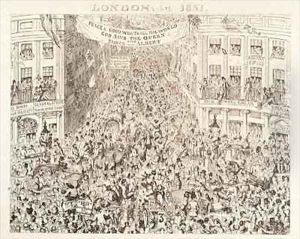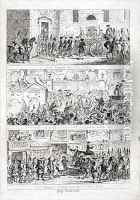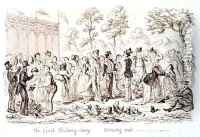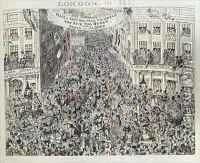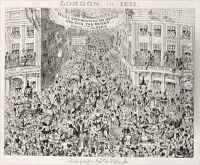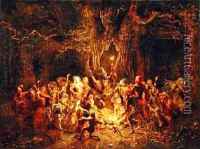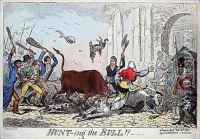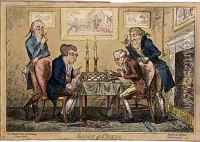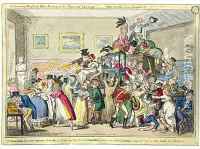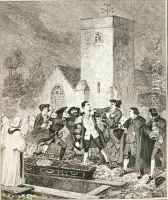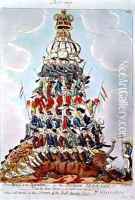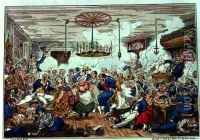George Cruikshank I Paintings
George Cruikshank was a British caricaturist and book illustrator, praised as the 'modern Hogarth' during his time. Born on September 27, 1792, in London, Cruikshank was one of eight children and the son of the caricaturist Isaac Cruikshank. He began his career following in his father's footsteps, producing satirical drawings and prints.
From an early age, George showed a natural talent for sketching and caricature. By his teenage years, he was already creating work for a variety of London publishers. He gained widespread recognition with his political prints that often commented on the royal family and leading politicians of the day, most notably during the Regency period. His work was characterized by sharp wit and detailed engravings, which made him a prominent figure in the field of British satire.
Cruikshank's career spanned over six decades, during which he produced a vast body of work including book illustrations, social caricatures, and serial comic narratives. He is perhaps best known for his illustrations for Charles Dickens' early works, including 'Sketches by Boz' and 'Oliver Twist.' These illustrations helped to bring Dickens' characters to life and contributed to the visual culture of the Victorian era.
In addition to his work with Dickens, Cruikshank also illustrated the works of other authors, such as William Harrison Ainsworth and Laurence Sterne, and produced a number of notable standalone works, including his series 'The Bottle' and 'The Drunkard's Children,' which were didactic in nature and aimed at highlighting the social evils of alcoholism.
In his later years, Cruikshank became an active campaigner for temperance and used his art to promote his views. His later works often reflected his personal stance against the consumption of alcohol, contrasting greatly with his earlier, more humorous caricatures.
George Cruikshank passed away on February 1, 1878, at the age of 85. He left behind a legacy as one of the most influential and prolific illustrators and satirists of the 19th century. His works remain significant for their artistic merit as well as their commentary on British society and politics during a period of great change.
